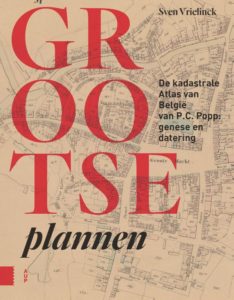The construction sector played a crucial role in the economic development of Brussels but remained underexplored. Matthijs Degraeve (VUB) mapped the long-term changes in the sector using a database of 16,700 construction enterprises and cadastral data from POPPKAD and LOKSTAT. His research shows how the sector experienced industrialization and market concentration on one hand, yet remained dominated by small-scale, flexible businesses on the other. As the city grew, the number of contractors increased, while specialized craftsmen declined. Economic crises led to temporary market concentration, whereas periods of growth encouraged fragmentation. Technological advancements boosted productivity in certain subsectors, but most businesses remained sole proprietorships or family firms. Ultimately, the sector slowly evolved towards larger and more capital-intensive enterprises.
Article:
Matthijs Degraeve. “The Business of City Building: Long-Term Change and Continuity in the Construction Sector (Brussels 1830-1970)”, Enterprise & Society, 2024, 1-32.
DETAILS
Database used: POPPKAD and LOKSTAT
Date: October 2024
Category: Scientific publication

